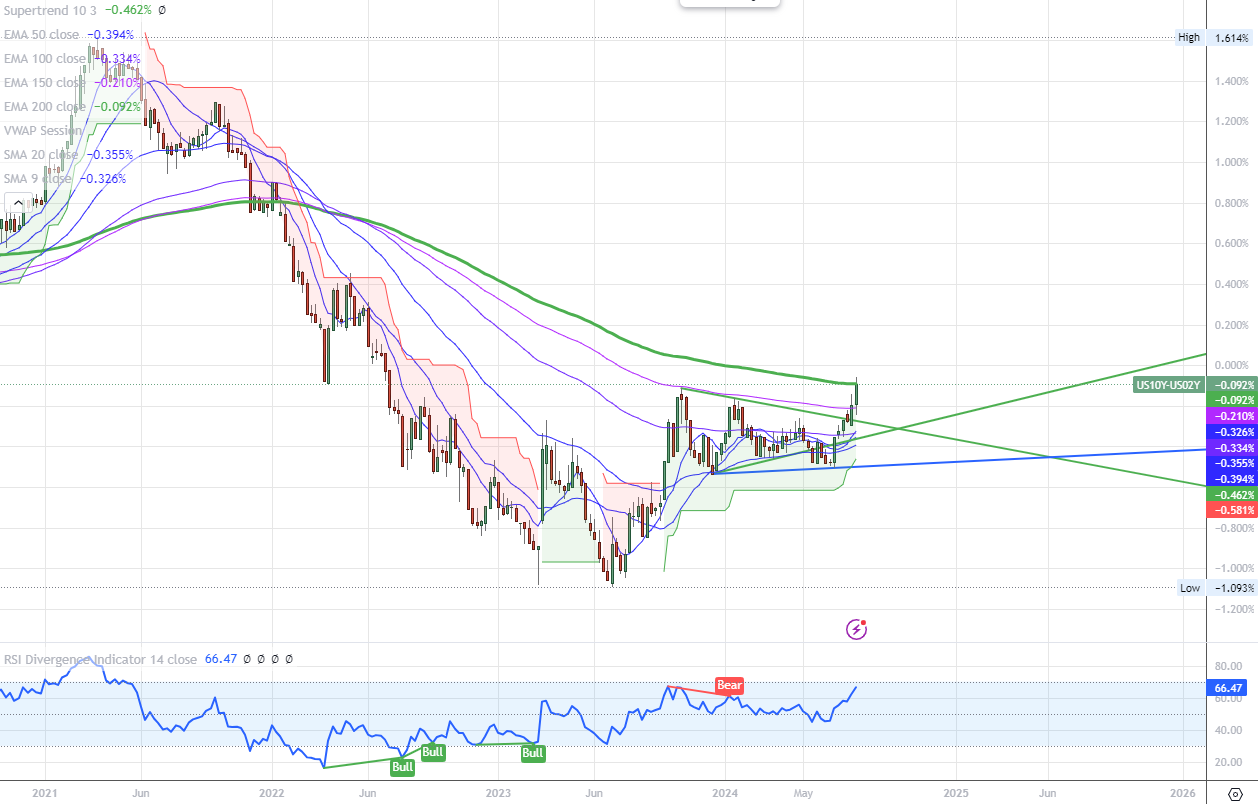The Pendulum Swings Again - From Soft Landing to Fears of a Recession | Employment | US2s and US10s Technical Levels | Macro Musings
As Howard Marks says The most important thing is "Awareness of the pendulum'. The mood swings of the market resemble the movement of a pendulum. Although the mid point of the arc best describes the location of the pendulum "on average", it actually spends very little of its time there. In fact, it is the movement towards an extreme itself that supplies the energy for the swing back.
Investment markets follow a pendulum like swing - b/w euphoria and depression, between celebrating positive developments and obsessing over negative ones and thus between over priced and underpriced.
While we may not know what the futures holds but me must have a fair sense of where we are headed. I hope this blog has helped you navigate the course of the markets by identifying these pendulum type swings and through the analysis, has helped you get a sense of how the data is evolving.
The Economic calendar was heavy with Top Tier Data.
BoJ raised the overnight call rate by 15 bps to 25 bps and announced a modest plan to taper JGB purchases by Yen 400 bn each quarter from Yen 5.7 trn to Yen 3 trn by March 2026. BoJs timing is in stark contrast to other G7 CBs who have initiated a rate cut or are on the verge of starting to cut rates. Rate cut actions by the BoJ amid weakening domestic growth could be a consequence of declining real wages due to sharp depreciation of the JPY and Political pressure. USDJPY slumped 5.6% (high / low weekly range) and the popular carry trades in USDMXN (MXN interest rates at 11%) and USDBRL (Selic Rate 10.50%) witnessed some unwinding pressure with the pair up 4.76% and 3% respectively. NASDAQ (in JPY terms) fell 10.5% over the week.
BoE announced a rate cut of 25 bps to 5.00% and Federal Reserve in its Monetary Policy statement mentioned that Employment and Inflation Goals continue to move into better balance. The Economic Outlook is uncertain and the Committee is attentive to the risks to both sides of it's dual mandate. In the post policy conference, Chair Powell mentions that this year's progress on inflation is more heartening since is it broad based across goods, non housing services and housing services as compared to last year when the progress was largely driven by durable goods disinflation. Federal Reserve could cut rates in September or cut them a lot if push comes to shove since conditions are like pre pandemic and there is no tolerance for material cooling in the labor market.
The Fed Fund Futures are pricing in 82 bps of rate cuts into 2024. It was only last week we spoke about the soft landing narrative being deeply entrenched in the markets and this week's employment data appears to have revived talks of a recession and intermeeting cuts.
The GDP estimates are holding up with Atlanta Fed GDPNow estimating 2.5% growth for Q3.
Gold prices were up 2.26% over the week as Geopolitical risk continues to dominate the headlines after the killing of Hamas top leader Ismail Haniyeh and
Now let's take a quick peek into the Economic Data Releases over the week:
We had the NFP release on Friday and it did 2 things:
1. The U/R rate came in at 4.30% which was above the long term 4.20% level
2. U/R at 4.30% triggered the Sahm Rule Recession Indicator which signals start of recession when the 3m MA of U/R rises over 50 bps above the minimum of the 3m MA from the previous 12 months. Sahm indicator is at 53 bps.
The prior 2 months data was revised lower by 29K and this month's number was well below consensus reading of 175K. The pace of AHE increase also came in soft at 0.23% mom and Average Hours worked declined by 0.10 hrs. Participation Rate actually ticked 10 bps higher. The increasing supply of labor is seen to be pushing up U/R. Refer to the table below for the numbers.
Now if you all remember, in my earlier blogpost, I had written about BLS' challenges in estimating employment numbers during natural disasters. BLS in the press releases states "Hurricane Beryl had no discernible effect on the national employment and unemployment data for July, and the response rates for the two surveys were within normal ranges." If I were you, I'd tread with caution in extrapolating the trend.
The Initial Jobless Claims (IJC) number came in at highest levels for 2024 and the 4W MA now at 238K. 4W MA of IJC was this high last in Aug 2023. The more interesting bit when looking at the 4W MA of Insured Unemployment (CJC) comes from the fact that these levels were last seen in December 2021.
4. On the DXY we finally did close below the 103.90 handle and 102 levels is where I see immediate support.
This week is a relatively light week on the calendar with PMI data, Jobless Claims, Trade Balance on the cards.









Comments
Post a Comment